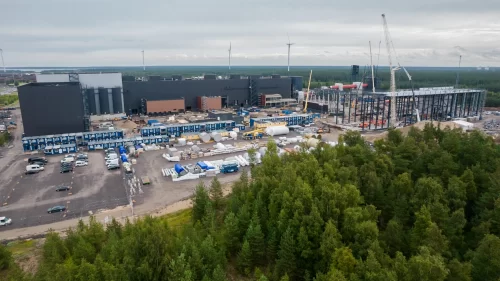The sector is reforming, regulations are tightening and a tough carbon neutrality target is looming. The concrete sector is living on a bit of shaky ground. What worries me is that increasing bureaucracy and regulations are pushing the basics out of the way when it comes to tackling carbon dioxide emissions from cement production or finding a substitute for cement.
It is true that cement production produces huge carbon emissions and that we must constantly work towards a greener future in order to find alternative solutions, but the solution is hardly the abolition of concrete construction.
It is easy to say that "concrete should only be used where it is really needed". With a little refinement, the comment could be "concrete should only be used for what is needed". By this we are referring to reducing the over-use of concrete in the sector. Unfortunately, it seems that the industry lacks a genuine desire and skill to optimise structures and structures are inadvertently becoming heavier than necessary, both for steel and concrete. As a responsible operator, we are determined to make this clear, with environmental impact minimisation being the most essential part of our ISO 14001 environmental management system.
Nowadays, an alternative is often sent with the offer, for optimising structures, based on the offer. It shows the benefits that can be achieved by optimising existing plans in terms of CO2 emissions, costs and minimising time. It can be a nuisance at times, but the consequences are dire if we remain silent. However, it is rewarding to see our planners take a passionate approach. Tonnes of carbon dioxide as such are not enough to describe the impact. It makes a difference to see that the emissions savings from, say, optimizing the strength class are of the same order of magnitude as the emissions from your own Volvo in terms of kilometres driven in a few years.
We recently carried out a thesis on "Carbon dioxide emissions from oversizing concrete structures from the perspective of shelters for the general publicor". It offers a down-to-earth perspective on what should be done alongside all the development work on greening. The thesis shows that, at best, carbon emissions were halved and costs were even reduced by optimising 22% designs.
"It was wild to realise how little attention is paid to optimising structures as an emission reduction issue in the public greening debate. It is a privilege to be on the Anfra team in these times."; Corkatti noted.
The work was limited to public shelters because the author, as a former mason, has a special interest in the construction of public shelters. The author of the thesis, Jeremiah Korkatti, currently works for us as an accountant. The future of concrete construction must also be in the hands of such open and critical thinking diamonds.
- Marko Liukko, Development Director
Thesis available for reading About








